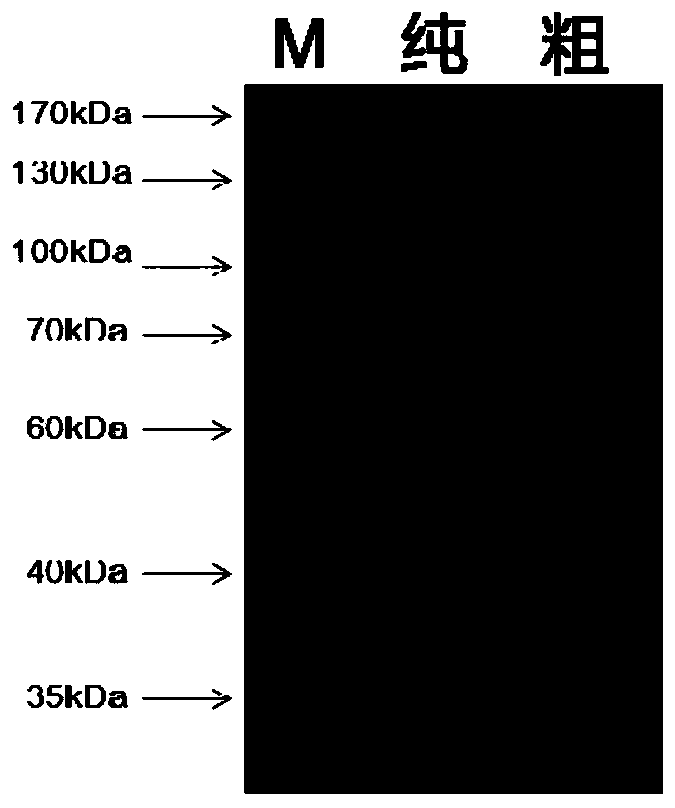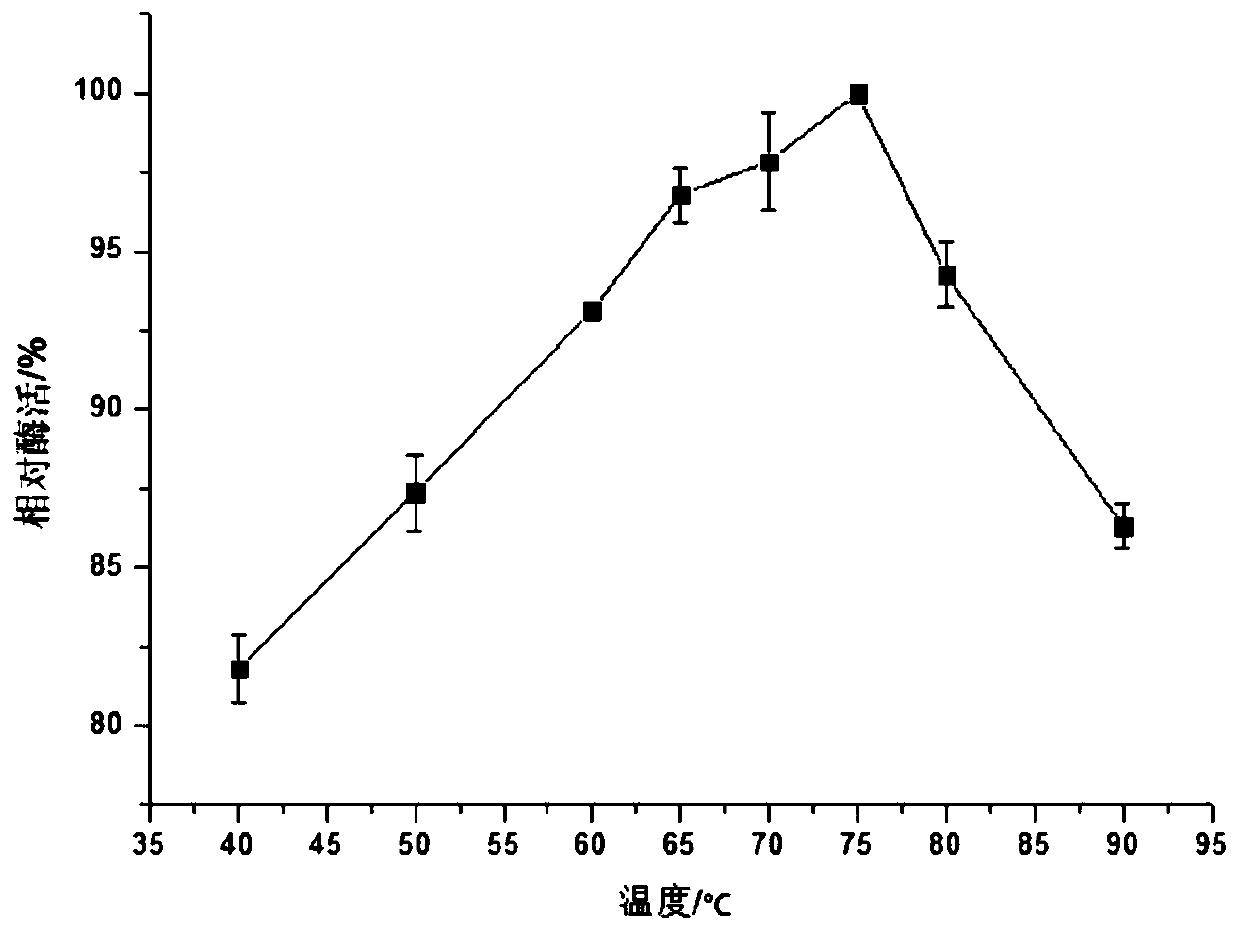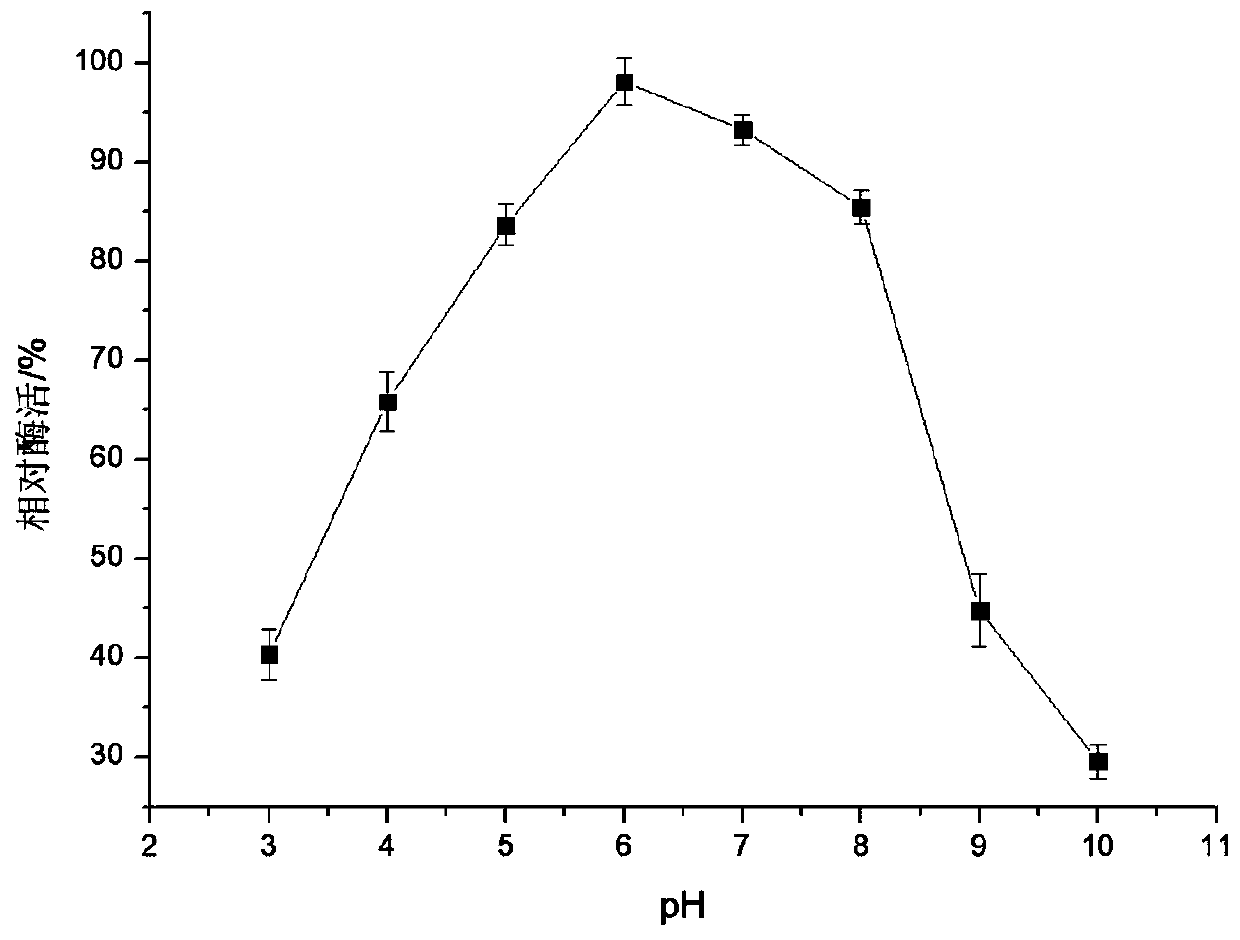Method for preparing thermal reversible starch based gelatin with controllable gelatin strength by enzyme method
A gel strength, starch-based technology, applied in the field of starch modification, can solve the problems of difficult application of starch gel products, uncontrollable, high starch gel strength, and achieve a wide range of applications, good temperature stability, high gelation the effect of strength
- Summary
- Abstract
- Description
- Claims
- Application Information
AI Technical Summary
Problems solved by technology
Method used
Image
Examples
Embodiment 1
[0040] Embodiment 1: the preparation of enzyme
[0041] The artificially synthesized gene fragment whose nucleotide sequence is shown in SEQ ID NO.2 (the amino acid sequence is shown in SEQ ID NO.1) is selected from the pET-28a plasmid to construct a recombinant plasmid, expressed by BL21 expression strain, and fermented by shaking flasks. Centrifuge and precipitate, sonicate the wall to obtain crude enzyme, and finally obtain 4αGTase pure enzyme after nickel column purification (see figure 1 ).
[0042]MLRGAGILLPLFSLPGPHGIGDMGPAAYRFVEFLRDAGQTYWQLLPLNPVLPEYDNSPYSSTSSFAGEPAYISLELLAEQGVLRRSASAEFGAGRADYEAARAYKVKIIAEAERPKDLDEFVGRNEWLEDYALYSALREYFGRPWVEWPRELRDRDPAALRQWREKLRRRIELEYLLQYFFWTQWRELKRHANSLGIFLIGDLPIYLSLDSADVWAHRELFKLDAEGRPLYVAGVPPDYFSPTGQLWGNPVYDWDAMRKEGFRWWLDRLRYTLSVFDYVRLDHFRGYAAYWEVPAGEKTAVNGRWVPAPGGELLERARDELGGLKIIAEDLGYITPDVVELRDRFGLPGMRVLQFAWDGNPANEHKPHNHVKNSVVYTGTHDNNTIVGWFFREASPKARREALEYMGRRSAKDIHWAFIRLAYFSVADVAVVPMQDFMGLGPEARINRPGTRGGNWVWRMTELPGRALARRIRRLARLYGR ...
Embodiment 2
[0043] Example 2: Properties of Enzymes
[0044] (1) The optimal reaction temperature of the enzyme
[0045] The disproportionation activity of 4αGTase was measured at different temperatures (50°C-90°C) to determine the optimum temperature. The optimum reaction temperature of 4-α-glycosyltransferase is 50~80℃.
[0046] Table 1 Optimum reaction temperature of 4αGTase
[0047]
[0048] (2) The optimal reaction pH of the enzyme
[0049] The buffer in the 4αGTase disproportionation assay method was replaced by buffers with different pH values (3.0-10.0), and the activity of 4αGTase was measured at 75°C to investigate the optimum pH of the enzyme. The optimum reaction pH is 5.0-8.0.
[0050] Table 2 Determination of optimum pH of 4αGTase
[0051]
[0052]
[0053] (3) Temperature stability of the enzyme
[0054] Incubate at different temperatures (50°C-90°C), take out part of the enzyme solution every 1 hour, cool down rapidly, and measure the remaining total enzym...
Embodiment 3
[0057] Embodiment 3: the impact of starch type on the performance of starch-based gel
[0058] (1) The starch with a mass concentration of 6% is dissolved in a buffer solution for slurry preparation, and is completely gelatinized at 120°C.
[0059] (2) Lower the temperature to 70°C, adjust the pH to 6.0, add 4-α-glycosyltransferase, react for 1-12 hours, then inactivate the enzyme, dry, and grind to obtain modified starch;
[0060] (3) Dissolving the obtained modified starch, heating and stirring at 70-90° C., and obtaining the modified starch gel after solidification. The starch mainly includes potato starch, corn starch, tapioca starch, wheat starch, pea starch and rice starch, and the results are shown in Table 4.
[0061] Table 4 The impact of starch types on the properties of modified starch
[0062] Starch type Potato starch corn starch Cassava starch wheat starch pea starch rice starch Conversion rates(%) 92.61 32.56 88.79 21.08 54.24 ...
PUM
 Login to View More
Login to View More Abstract
Description
Claims
Application Information
 Login to View More
Login to View More - R&D
- Intellectual Property
- Life Sciences
- Materials
- Tech Scout
- Unparalleled Data Quality
- Higher Quality Content
- 60% Fewer Hallucinations
Browse by: Latest US Patents, China's latest patents, Technical Efficacy Thesaurus, Application Domain, Technology Topic, Popular Technical Reports.
© 2025 PatSnap. All rights reserved.Legal|Privacy policy|Modern Slavery Act Transparency Statement|Sitemap|About US| Contact US: help@patsnap.com



